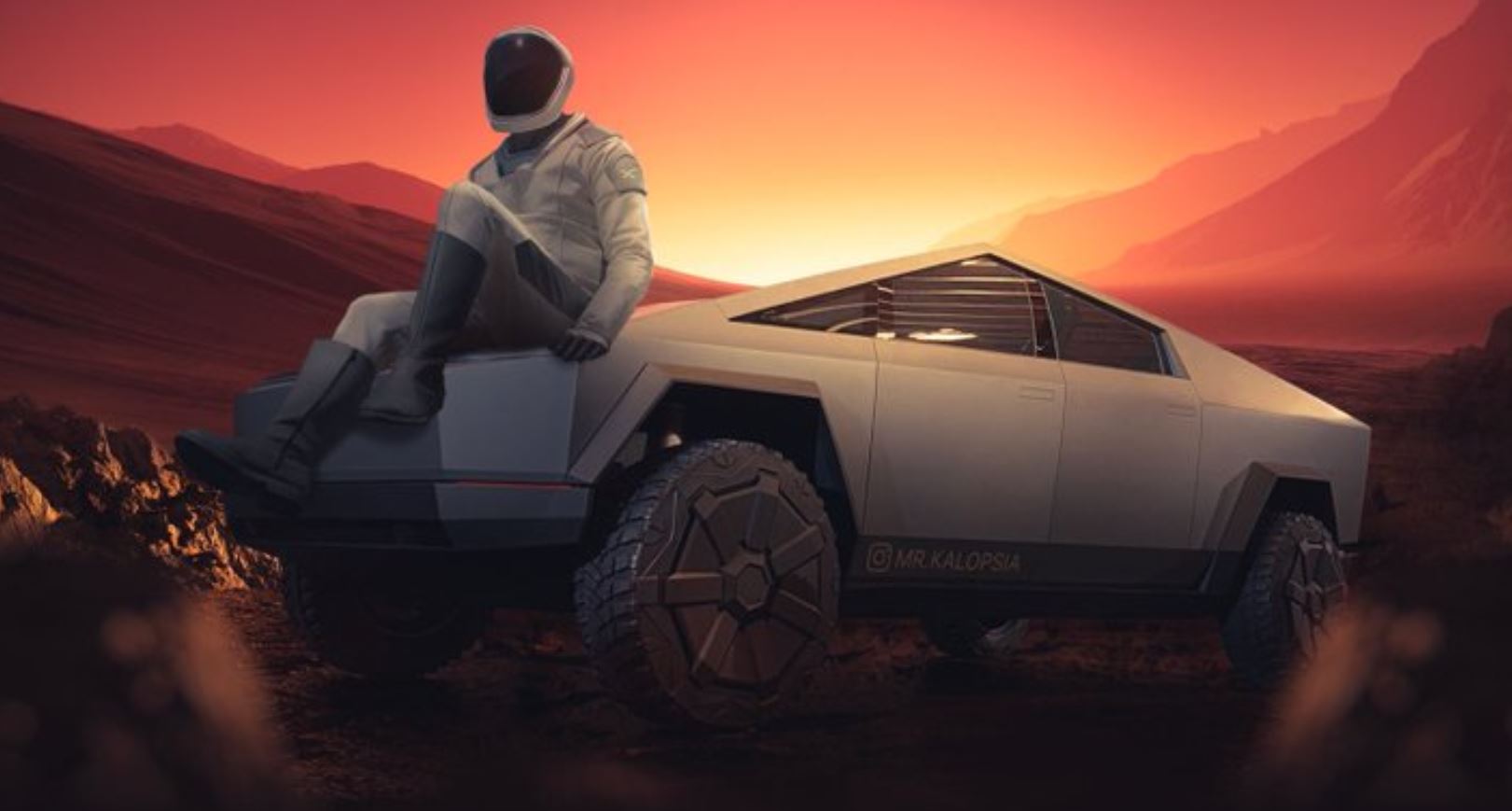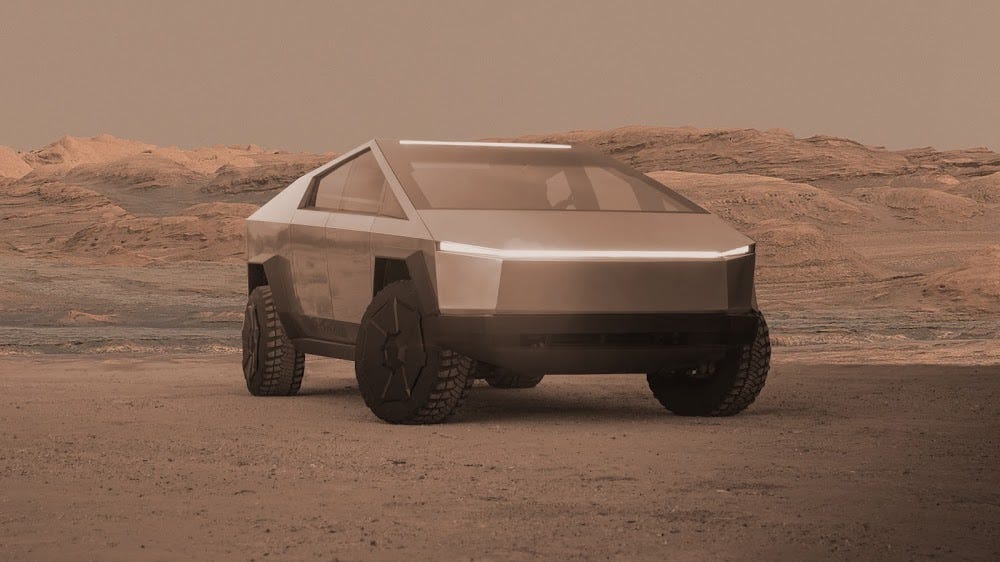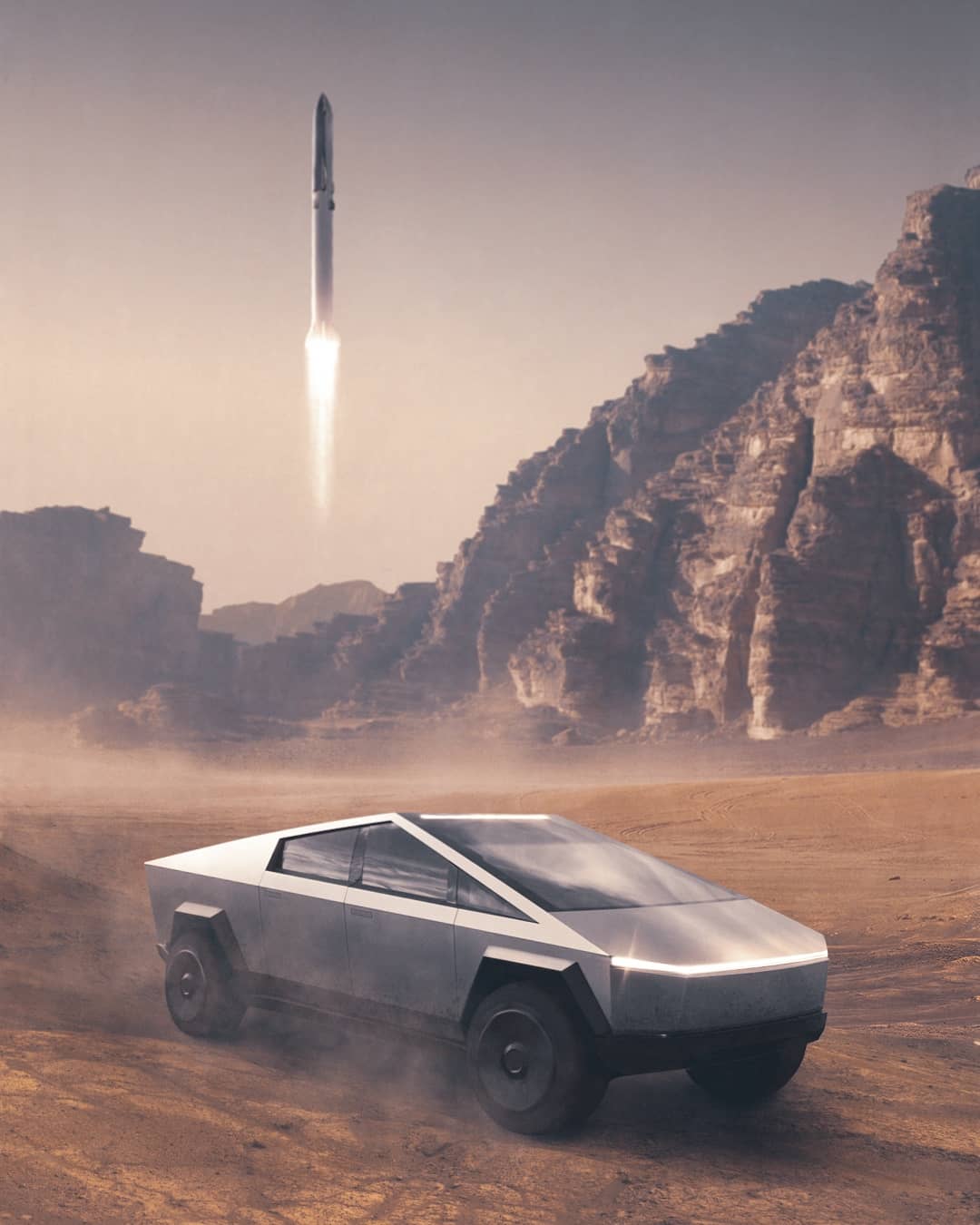The Science behind Driving the Cybertruck on Mars.

Key Highlights
- Through a tweet Elon Musk announced that Tesla's pressurised Cyber Truck will serve as the official vehicle of Mars.
- Rather than purchasing and developing highly specialised components that are costly and time-consuming to develop, In this article, we'll look at the development of the Cyber truck, from its Earth and Mars-specific design features to the connections it has to future Mars missions, such as the factory's proximity to SpaceX's launch site in Texas and how a Model X has already been used to transport astronauts to the launchpad with their spacesuits connected to the car.
- The Cyber truck's range is up to 500 miles (or 800 kilometres).According to the model, the top model can accelerate from zero to sixty in two and a half seconds and reach a top speed of 130 mph, or 210 kilometres per hour.
- The Earth version of the Cybertruck will be built in Giga, Texas, at Tesla's new facility, which will also produce the Tesla semis Model Three and Y, as well as batteries.
- The first Cybertrucks are expected to begin arriving by the end of 2021, with production ramping up in 2022, the same year Elon Musk intends to begin launching starships to Mars to provide life support equipment, followed by a human trip in 2024.
Advertisement

Through a tweet Elon Musk announced that Tesla's pressurised Cyber Truck will serve as the official vehicle of Mars. The Cybertruck was already built to be exceedingly sturdy, so it's not a huge leap for Tesla to create a pressurised version for Mars, and Elon Musk and SpaceX are big proponents of employing commercial, easily-available components when developing space technology. Rather than purchasing and developing highly specialised components that are costly and time-consuming to develop, In this article, we'll look at the development of the Cyber truck, from its Earth and Mars-specific design features to the connections it has to future Mars missions, such as the factory's proximity to SpaceX's launch site in Texas and how a Model X has already been used to transport astronauts to the launchpad with their spacesuits connected to the car.
And at the conclusion of this piece, we'll look farther into the future to see what the future holds for the Cyber Truck in terms of Mars construction.
What does having a pressurised version of the Cyber truck entail? Because the Martian atmosphere is less than 1% as dense as the Earth's, any Mars vehicles will require their own human-breathable air at Earth-like pressures. This would imply that the air inside the Cybertruck is approximately 100 times more pressurised than the air on Mars. This increased pressure within indicates that the force is pushing outward from the interior, similar to how a balloon is inflated. As a result, the vehicle must be robust enough to bear this pressure.
The stainless steel utilised to construct the Cybertruck will be identical to that used to construct the SpaceX Starship. Typically, metal is stamped into shape when constructing an automobile. According to Elon Musk, the cold rolled steel used to construct the Cyber Truck is so strong that it might destroy a stamping machine. Instead of that, the steel will be laser-cut and shaped. Finally, the skin of the Cybertruck will be 3 mm thick.
Additionally, the Cybertruck must be totally sealed and airtight to prevent air leakage on Mars. This would imply that the windows would be fixed, closed, and surrounded by a seal. The doors would have to be completely airtight, and the truck's ventilation system would be unable to take in outside air. For passengers, there would need to be a system in place to manage the air, which would include a way to remove CO2 and increase the amount of oxygen. Another method would be for the astronauts to remain in their spacesuits while riding in the Tesla Mars Cyber vehicle, like SpaceX and Tesla did when delivering the American astronauts to the SpaceX launchpad in 2020.
The vehicle was a Tesla Model X, and the astronaut suits included an umbilical cable that connected to the car and provided cooling for the humans. However, as with all Tesla vehicles, the Cybertruck will be equipped with the full complement of self-driving sensors, including cameras, radar, and ultrasonic sensors, eliminating the need for astronauts to drive the Cybertruck around Mars hauling materials and equipment. Consider the qualities of the Cybertruck that will benefit people on Earth and eventually on Mars. Elon Musk stated that the Cybertruck was inspired by the Halo warthog.
Advertisement

It is a quick and lightweight tactical ground vehicle that is utilised by the fictional United Nations Space Command's military forces.
Additionally, it can convert carbon matter to fuel and filter water as well as convert it to fuel. Returning to the real-world Cyber Truck, it is being developed as a utility vehicle for ordinary people on Earth. According to Tesla, the Cyber Truck combines the usefulness of a truck with the performance of a sports car. The pickup truck bed has been built to be as functional as feasible for workers who will use it on construction sites and in isolated regions where equipment will be used. It operates on 240 volts, which means that builders may no longer need to bring a generator to a construction site, as nonelectric trucks lack the large batteries required to compete with the Cyber truck.
Additionally, the Cybertruck's air suspension system will be connected to a hose located in the back bed, allowing compressed air to be used to power air compression instruments such as nailers, drills, and spray painters. When it comes to driving, the Cybertruck will include an active suspension system that adjusts the height and dampening of the vehicle. This enables the vehicle to adjust to road conditions and the weight in the truck bed by raising, lowering, or dampening the impact of each wheel individually. This would significantly improve the offroad performance of a pickup truck that may be transporting large objects when travelling off-road on Earth or Mars.
And then there's the Cybertrucks add-on feature of solar panels, which Elon Musk mentioned in a tweet, stating that solar panels could add 15 miles of range per day, while adding a fold-out solar wing could add up to 30 to 40 miles per day.
Elon also stated that, while the average person in the United States drives 30 miles per day, solar panels on Mars are inefficient and cannot produce the same amount of electricity as they do on Earth.However, would astronauts require only a few miles of electricity every day to move equipment and supplies around a Mars base? Let's go into greater detail about how the Cybertruck will be constructed. The primary distinction between Tesla's Cybertruck and conventional trucks is the design of the exoskeleton.
Advertisement
Trucks are often built on a body-on-frame architecture, which means the engine propels the internal metal frame and the truck's body is a thin skin.
The Cybertruck exoskeleton is not supported internally. Rather than that, the outer skin is so strong that it serves as the frame, and the motors directly push the skin. The skin is constructed of cold-rolled stainless steel, a material that is substantially stronger than standard steel. The robust skin is complemented by Tesla's armour glass. The external shell is not painted, which decreases production costs.
According to estimates, it might save $180 million while establishing the manufacturing line. This makes it quicker and faster to produce, as well as more affordable, allowing Tesla to create more futuristic technology for the Cybertruck. Musk, Elon In November 2019, just two days after the Cybertruck was launched, Ford tweeted that 146,000 preorders had been placed, with 42% being dual motors, 41% being triple motors, and 17% being single motors. The single motor model has rear wheel drive, whilst the dual and triple motor models have all-wheel drive.
Recently Elon Musk announced that Cybertruck will also come in Four motor varient.
Read Here: Elon Musk confirms that Tesla's Cybertruck will feature a four motor configuration
When more motors are added, off-road capability, acceleration, and range improve, but the price increases. The Cyber truck's range is up to 500 miles (or 800 kilometres).
According to the model, the top model can accelerate from zero to sixty in two and a half seconds and reach a top speed of 130 mph, or 210 kilometres per hour. The top-of-the-line trim motor has a payload capacity of £14,000 or 6350 kg and can pull three £500 or 1600 kg.It is priced at $69,900, while the base model is priced at $39,900. The Earth version of the Cybertruck will be built in Giga, Texas, at Tesla's new facility, which will also produce the Tesla semis Model Three and Y, as well as batteries.
The plant in Giga, Texas is located near the north of SpaceX's South Texas launch location, popularly known as Boca Chica. This is the location of one of the starship prototypes that will one day transport humanity to Mars.
Continuing onward The first Cybertrucks are expected to begin arriving by the end of 2021, with production ramping up in 2022, the same year Elon Musk intends to begin launching starships to Mars to provide life support equipment, followed by a human trip in 2024. Due to the fact that Mars and Earth align every two years, there has been a surge in demand for the cyber vehicle here on Earth, Elon Musk explained. It was difficult to estimate the number of preorders since they stopped counting, but they estimated it to be well over half a million.
Advertisement

The Tesla Model 3 had 3,250 bookings within a week of its unveiling in 2016.
However, the Tesla Model 3 reservation fee is $1,000, while the Cybertruck reservation fee is $100. However, this does mean that the Cybertruck has generated over $50 million in presale revenue. Elon Musk recently stated that if the Cybertruck does not perform well, Tesla may revert to a more traditional pickup design. Could a day come when SpaceX sends many Cybertrucks to Mars on a starship to assist with the construction of a human settlement? Will these Cybertrucks be used to deliver materials around the Mars outpost? Will they be self-driving, or will human personnel in spacesuits pilot the Cyber quads?
These cyber quads are an optional purchase for cyber truck owners on Earth; they are two-person ATVs that charge in the bed of the future cybertruck. On the next edition of Venture City, we'll talk to Elon Musk about his thoughts on brain-computer interfaces.
Advertisement
